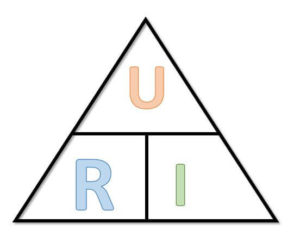Wenn man Schaltungen aufbaut so muss man ab und zu einige Berechnungen durchführen. Zum Beispiel wenn man einen Vorwiderstand für eine Leuchtdiode benötigt.
Oder man möchte Berechnen ob die Schaltung welche man aufgebaut hat, an einem Arduino betrieben werden kann (der Arduino kann nur pro I/O Pin max. 40mA).
Ohmsches Gesetz
Das Ohmsche Gesetzt wird mit der mathematischen Formel URI dargestellt. Wobei U für die Spannung, I für die Stromstärke und R für den Widerstand steht.

Widerstand berechen
Möchte man also nun den Widerstand berechnen so lautet die Formel R= U/I.
Stromstärke berechen
Um die Stromstärke zu berechnen wendet man die Formel I = U/R an.
Spannung berechnen
Die Spannung berechnet man mit der Formel U = R*I.